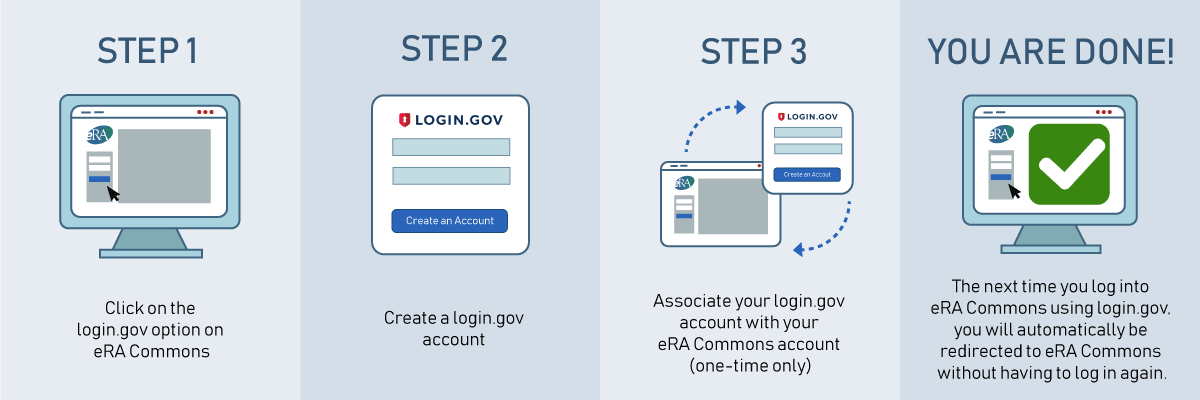Have you moved to using two-factor authentication when using eRA modules like eRA Commons, ASSIST and Internet Assisted Review? If not, read on to see when you need to make the transition and what steps you should take!
eRA had earlier set a deadline of September 15, 2021 for all eRA users to start using Login.gov instead of their eRA username and password. To give users more time, eRA is now phasing in the requirement to use two-factor authentication to access these modules. Users can choose between:
- Login.gov, or
- an InCommon Federated account (when an organization authenticates its own users to access eRA modules) that is compliant with NIH’s two-factor authentication standards.
Why use two-factor authentication? Besides the advantage of greater security, use of Login.gov, for instance, provides the ease of signing into many federal systems, including Grants.gov, SAM.gov, MyNCBI, MyBibliography and more with a single set of credentials.
Key Elements of NIH’s Phased Transition for the NIH Applicant/Recipient Community (starting September 15, 2021)
For Users with Scientific Accounts (principal investigators, trainees, etc.)
If you have a single eRA scientific account, you should make the transition as soon as possible. If not, the requirement for use of two-factor authentication will be enforced for all NIH PIs and key personnel 45 days after the first submission of their competing grant application (Type 1 or 2) or Research Performance Progress Report (RPPR) that occurs after September 15, 2021.
For Users with Administrative Accounts (signing official, administrative official, etc.)
If you have a single eRA administrative account, you are encouraged to make the transition as soon as possible. And if you have multiple administrative accounts, eRA is developing a method to accommodate you using a single Login.gov account. In either of these cases, transition to two-factor authentication will be required in early 2022.
For Users with a Combination of Scientific and Administrative Accounts
If you have a scientific account and one or more administrative accounts at eRA, transition your scientific account as soon as possible and wait to transition your administrative accounts until early 2022.
For InCommon Federated Accounts
If you use an InCommon Federated account and it meets NIH’s two-factor authentication standards by September 15, 2021, you will be permitted to use your InCommon Federated account without having to transition to Login.gov. If your institution’s credentialing system does not support two-factor authentication, then you will be required to use Login.gov. It is up to your institution to strengthen its authentication to meet NIH’s two-factor authentication requirements. See Accessing eRA Modules Via an InCommon Federated Account.
Exceptions to the Transition Timeline
Reviewers
- The transition for reviewers (those with the IAR role) is ongoing and unchanged. Reviewers will continue to be required to use two-factor authentication as soon as they are enabled for a review meeting. However, reviewers will have the new option to use an InCommon Federated account that supports NIH’s two-factor authentication standards.
Non-NIH eRA partner agency applicants/recipients
- The updated plan applies only to NIH applicants/recipients; while non-NIH eRA partner agency applicants/recipients are encouraged to move to two-factor authentication now, they are not required to at this time (except for reviewers whose transition is ongoing; or applicants/recipients who apply to NIH or have an NIH grant).
What you need to do
It’s a simple, one-time, three-step process to associate your eRA account with your Login.gov account. Just go the eRA Commons home screen, click on LOGIN.GOV, and follow the on-screen prompts.
Our cheat sheet provides detailed steps and screenshots in case you need them.
Resources
- Guide Notice: NOT-OD-21-172
- Access eRA Modules via Login.gov webpage
- Brochure: Transition Plan for Two-Factor Authentication Requirement for Accessing eRA Systems(August 6, 2021)
- 2FA flyer(Updated June 24, 2021)
- Video tutorials
- FAQs (Updated August 6, 2021)




0 Comments